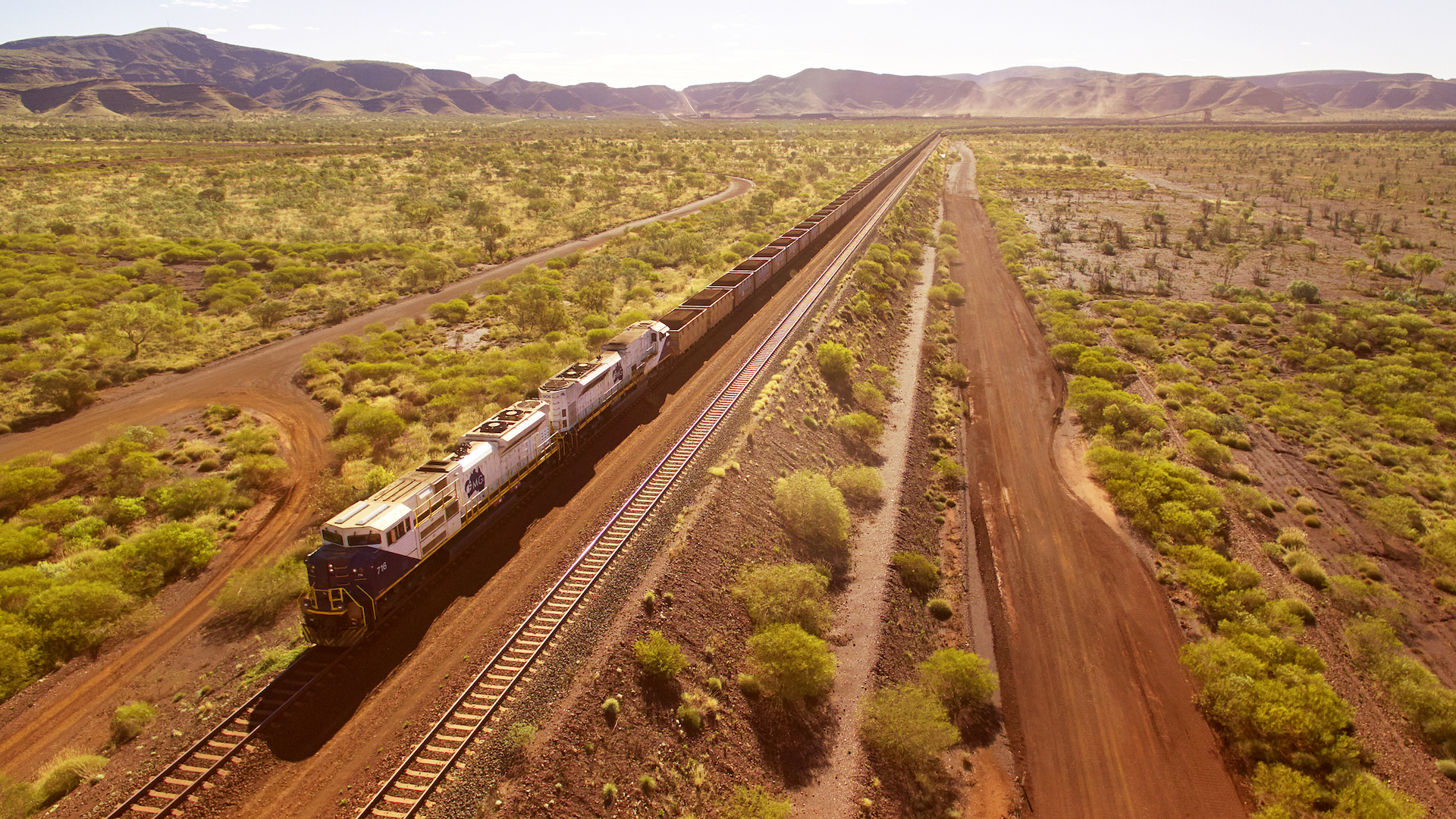

The laws of thermodynamics are immutable: There is no infinite energy source. For example, lifting an object takes more energy than is released by dropping it. And yet, an Australian mining company says it is developing a way for its ore trains to result in a net energy surplus. The so-called “infinity trains” involve neither witchcraft nor breaking the laws of physics, just some clever thinking, some of it supplied by a spinoff of a Formula 1 team.
Australian mining firm Fortescue declared its intent to field these energy-generating “infinity trains” in March, using the expertise of Williams Advanced Engineering. Yes, that Williams. At present, Fortescue’s rail operations rely on a fleet of 54 diesel-electric locomotives, which pull 16 trainsets consisting of up to 244 cars containing nearly 38 tons of ore and stretching over 1.7 miles long. The firm believes decarbonizing this form of transit is possible, so it plans to replace some of its locomotives with battery-electric units—the key to this is a positive energy loop.
Modern locomotives don’t rely just on friction brakes but also on dynamic brakes—think of them as operating like regenerative brakes in an electric car. In a diesel locomotive, without a battery to store the energy, energy is often burned away in banks of resistors (some electrics can feed it back into an overhead catenary or electrified third rail to power other parts of the line). With batteries added in, Fortescue’s “infinity trains” will capture all that energy rather than waste it.
Regenerative braking alone isn’t a net positive source of energy. But Fortescue has concluded that these trains will indeed produce a surplus entirely because of the way they’re routed. As outlined by NBC, the infinity trains may be used on a quartet of routes in Pilbara, Australia, where the trains will depart their destinations headed uphill, with a battery charge but no load. At the top, they’ll load up on ore, whose weight will pull the train downhill with far greater force than the empty train had to overcome on its way up.

As a result, the trains will be able to crank their regen to the max, generating more energy than the trip back up will take, freeing up the extra to be used elsewhere. By 2030, Fortescue hopes all four routes will be running these trains and diminishing the company’s carbon emissions. “Diesel consumption and associated emissions will be eliminated once the Infinity Train is fully implemented across Fortescue’s operations, significantly contributing to Fortescue’s target to be diesel-free by 2030,” the company said.
The limits of regenerative braking as a source of energy are something I’ve previously explored by driving a Nissan Leaf up Pikes Peak and then back down again with regeneration set to the max. Surprisingly, the EV recovered so much range on the way down that the net impact on the range was roughly equivalent to driving the same distance over flat ground. If I had added a load, I would likely have still more energy.
The same principle is being explored with electric mining trucks, as reported by NBC, and is even grounds for a proposal to use electric trucks toting water gathered at high altitudes as a means of hydroelectric power generation. Such a method of generating electricity isn’t practical on a large scale and only functions when heavy loads are carried down inclines. Still, it’s marvelous to see people thinking outside the box about how major industrial polluters can reduce—or even eliminate—some of their carbon emissions.
Got a tip or question for the author? You can reach them here: james@thedrive.com